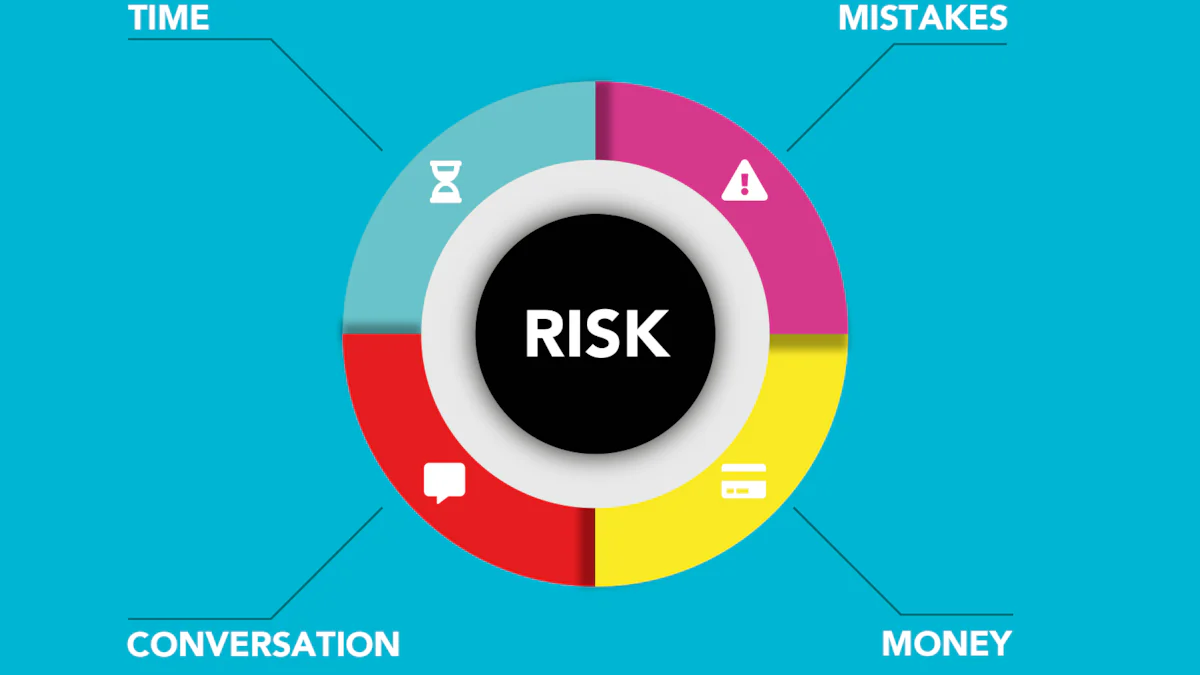Mitigating Blockchain Risks: A Comprehensive Analysis for 2024
 Mitigating Blockchain Risks: A Comprehensive Analysis for 2024
Mitigating Blockchain Risks: A Comprehensive Analysis for 2024
Unveiling Blockchain Risks
As we step into 2024, the realm of blockchain technology is fraught with a diverse array of challenges, particularly in the domain of mitigating blockchain risks. Understanding and addressing these risks are pivotal for ensuring the security and stability of blockchain ecosystems. From regulatory compliance to technological vulnerabilities, the landscape demands a comprehensive analysis to fortify blockchain risk management strategies and enhance overall blockchain security.
Navigating Conflict of Interest in Blockchain Ecosystems
Blockchain ecosystems are not immune to the complexities of conflict of interest risks. Understanding the implications of these risks within blockchain environments is crucial. Conflicting interests can arise at various levels, impacting decision-making processes, governance structures, and overall trust within the ecosystem. Regulating conflict of interest involves implementing measures that enhance transparency, accountability, and fairness. By mitigating conflict of interest risks in blockchain ecosystems, we can foster an environment built on integrity and reliability.
Addressing Technical Vulnerabilities in Blockchain Systems
Identifying Technical Vulnerabilities
The landscape of blockchain technology is rife with technical vulnerabilities that can pose significant risks to the integrity and security of blockchain systems. These vulnerabilities encompass a wide array of potential weaknesses, including smart contract bugs, consensus algorithm flaws, and susceptibility to 51% attacks. Understanding and identifying these vulnerabilities are fundamental steps toward fortifying the resilience of blockchain systems.
Mitigating Technical Risks
To address these technical vulnerabilities, it is imperative to implement robust strategies aimed at mitigating risks within blockchain technology. This involves proactive measures such as code audits, penetration testing, and the adoption of secure coding practices. By addressing and mitigating technical vulnerabilities in blockchain systems, we can bolster the overall security and reliability of blockchain technology.
Uncovering Inherent Weaknesses in Blockchain and Its Implications
Exploring Inherent Weaknesses
Blockchain technology, despite its advancements, harbors inherent weaknesses that can pose significant challenges. These weaknesses encompass issues such as scalability limitations, interoperability constraints, and the potential for privacy breaches. Understanding these vulnerabilities is essential to comprehend the broader implications they hold for blockchain ecosystems and their applications across various industries.
Addressing Inherent Weaknesses
To address these vulnerabilities, it is imperative to develop strategies aimed at mitigating the inherent weaknesses within blockchain technology. This involves initiatives such as exploring innovative consensus mechanisms, enhancing privacy protocols, and fostering interoperable standards. By proactively addressing and mitigating the inherent weaknesses in blockchain technology, we can pave the way for a more robust and adaptable blockchain ecosystem.
Strategies for Mitigating Blockchain Risks
Risk Mitigation Strategies
Mitigating risks in blockchain technology demands a multifaceted approach that encompasses various strategies. These include the implementation of robust encryption standards, the utilization of secure multi-party computation, and the integration of advanced identity management protocols. Additionally, leveraging consensus diversity and deploying fail-safe mechanisms are pivotal in fortifying blockchain risk reduction efforts.
Implementing Risk Management
Implementing effective risk management practices within blockchain ecosystems involves a combination of proactive measures and responsive strategies. This includes continuous monitoring of network activity, swift incident response protocols, and the establishment of clear governance frameworks. By implementing these best practices for risk management, organizations can bolster their ability to control and mitigate risks within their blockchain environments.
Outlook on Blockchain Risk Management
By diligently examining critical areas and implementing effective strategies, blockchain risks can be mitigated, paving the way for a secure and efficient ecosystem that fosters trust and reliability.
